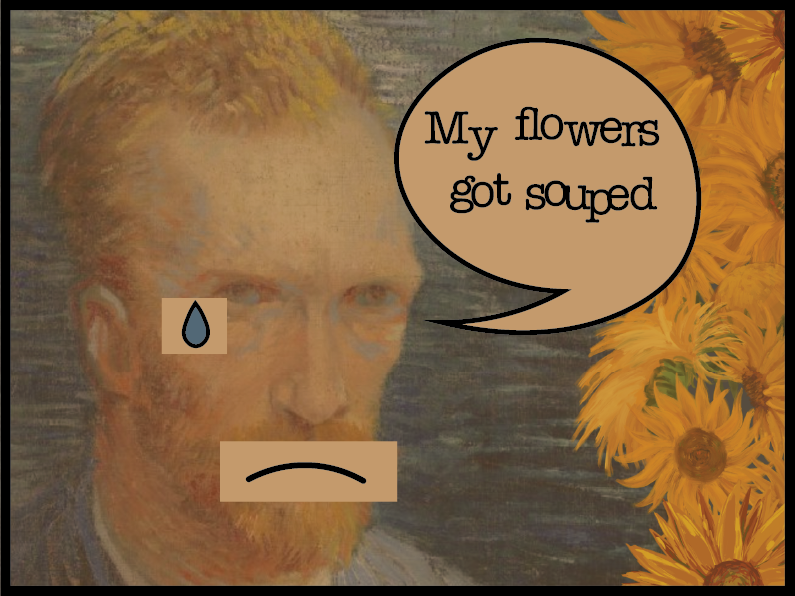Destroying or attempting to destroy artwork in protest of oil and gas is not effective in helping the environment, and only deters other people from the cause.
On Sept. 27, three protestors from Just Stop Oil threw soup at the “Sunflowers” paintings by Vincent Van Gogh, on display at London’s National Gallery. This is the second time one of these paintings, “Sunflowers 1888,” was attacked by protestors from this organization, the first time being in 2022.
According to the BBC, a video posted by Just Stop Oil captures these protestors claiming, “There are people in prison for demanding an end to new oil and gas, something which is now government policy after sustained, disruptive actions, countless headlines and the resulting political pressure.”
Although the paintings themselves were unharmed due to their protective screens, these actions did not go without consequences. According to Reuters, the 2022 incident had caused $13,385 worth of damages to the painting’s antique 17th-century frame. The National Gallery had been a target of these attacks three times in recent years, the BBC stated.
The question stands on how effective these protests have been. Aside from outcry on social media, there has been very little substantial change.
“Ultimately, I wonder if actions that simply raise awareness, no matter how superficially edgy, are actually more centrist than radical, causing minimal disruption to the carbon-captured political and economic status quo, and leaving untouched the machineries of the global fossil fuel order,” Ben Brooker, a writer at Overland, said in reference to a 2022 incident.
After all, oil and gas are still in production, the Van Gogh paintings are unharmed and most people laugh off these stories as a few annoying teenagers trying to be a part of some sort of movement.
There is merit in speaking out against the oil industry, due to the negative impact it has on our environment, and therefore on people. “In order to avoid the worst impacts of climate change, scientists say the world cannot afford to burn more than one-third of known oil reserves,” Greenpeace said. “The same study also found that 100 percent of Arctic oil and gas must be left in the ground to limit catastrophic temperature rise.”
Some people who share the viewpoints of Just Stop Oil claim that the only way to advocate for such an important cause is to be disruptive and loud, to make people hear the message.
“But if protests are symbols, many see defacing art as senseless destruction disconnected from the climate crisis,” The Washington Post writes. “Despite Just Stop Oil supporters’ argument that people should feel even more anger toward the destruction of the climate than they feel about a monument.”
The more that protestors decide to take out their message on artworks and monuments, the more museums and galleries will become inaccessible to the public; the more disconnected the public will become from their heritage and culture. According to The Spectator, “Every time Just Stop Oil pulls one of these stunts, it increases the likelihood that museums, galleries and heritage sites will put more distance between their wares and the general public.”
Appreciation towards art and art education has declined throughout the years, and protests like this only further isolate people from art while not raising awareness on the issue of oil and gas either.
More positive outcomes would come out of signing petitions, taking part in movements that invest in clean energy and speaking out about how important this issue is than from angering people by throwing soup on famous paintings.
Categories:
Climate activists won’t reach their goals by destroying museum art
October 14, 2024
3
More to Discover
About the Contributor

Vibodha Gallage Dona, Graphics Editor
Vibodha Gallage Dona is the Graphics Editor for The Ticker.








